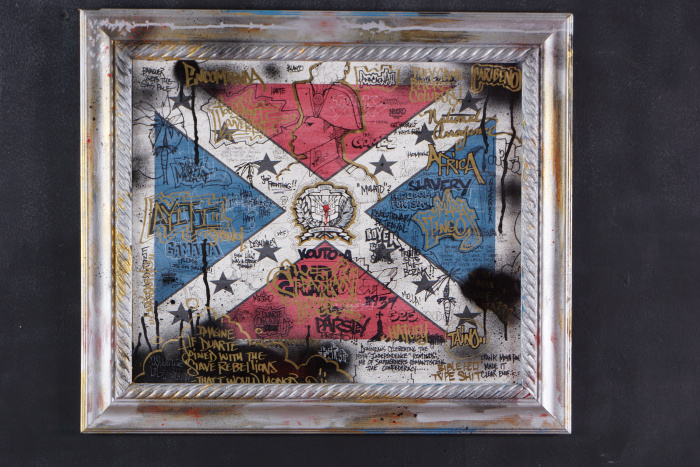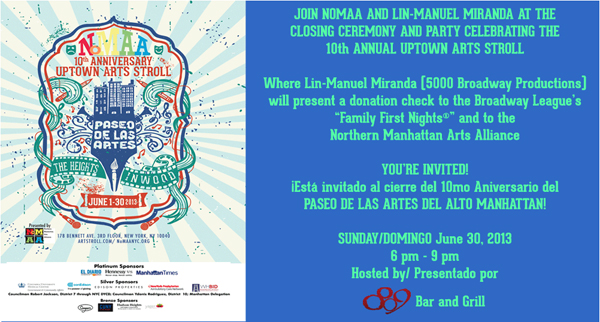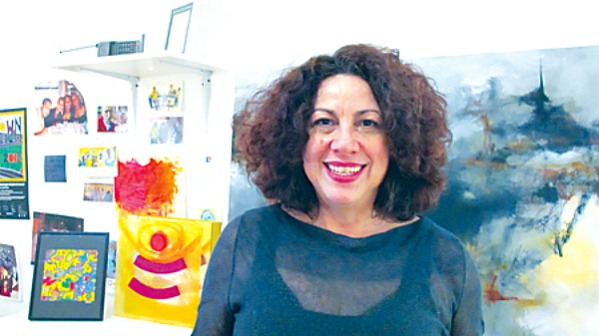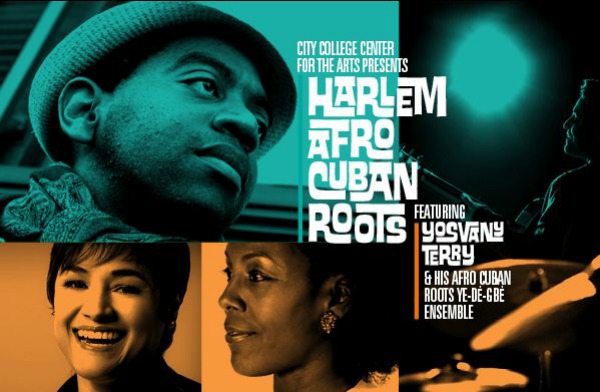BY R. L. Gatton
Thus far, the tenth annual Uptown Art Stroll confirms the Washington Heights community as an away-from-the-center of art in New York. A small sample of work reveals new ways in which artists are examining themes central to the lived experience of north Manhattan.
In the early evening of Thursday, June 6th, Hector Canonge staged a moving performance piece, Connexions, in the tunnel connecting Bennett Ave to the 190thStreet A train station. Staging his performance inside the granite cliffs that give Washington Heights its name and geographical distinction, Canonge presented a personal, site-specific sketch that envisioned the commuter’s corridor as an environment of disturbance, alienation, and, ultimately, grace.
Clutching a bundle, clothed in a bright red jumpsuit, with a swath of the same fabric wrapped around his entire head and face, Canonge made his way barefoot (and ostensibly blindly) up the length of the tunnel in a series of stylized, dance-like movements. Along the way he unraveled a yellow cord, one end of which was held in place by the foot of cellist Jacob Cohen who sat on a stool near the Bennett Ave. entrance, facing the length of the tunnel and accompanying Canonge’s progress with improvised music. By the time the artist reached the other end of the tunnel, the yellow cord had been completely unrolled and lay down the center of the tunnel floor. Near the token booth, his face now uncovered, the artist began removing flowers and small white umbrellas from his bundle. Flowers were strewn or offered to passersby. The expressive, often acrobatic, movements continued and umbrellas were opened and laid on the floor alongside the yellow cord, sometimes in ritualistic-seeming gestures, as Canonge made his return journey. During the second half of the piece, the yellow cord, white umbrellas, dynamic red-clad figure, and blue-green walls formed an interior landscape of bright color, a transitory human-architectural canvas.
Staging his piece between 6 and 7pm allowed Canonge to make full use of the audience of commuters streaming up and down the tunnel. It became a drama of interference, with passersby on foot or bicycle–amused, annoyed, puzzled, or determinedly oblivious–sidestepping either Canonge, the umbrellas, the flowers, or the rope on the floor. As he neared the spot where he had begun, Canonge used the props and the walls of the tunnel in ever-more dramatic fashion, ocasionally leaning against the wall with a flower or open umbrella extended, as an offering (human or divine?). Cohen’s cello music echoed throughout in tones often mournful, sometimes jolting, and occasionally frenetic as when mimicking sudden surges of pedestrian traffic. Like the score to a silent movie, the music gave a narrative feel to Canonge’s actions.
To a viewer, Connexions conceived of the interaction between ubiquitous street venders and commuters trying to avoid them as a kind of dance, one that briefly becomes a pas-de-deux when a sale occurs and contact is made. The evening’s drizzly weather was a potent backdrop to the performance; Canonge’s free offering of the umbrellas teased our ambivalent feelings toward people selling stuff that, occasionally, we need. The street peddler—reflexively dismissed as a ‘poor foreigner’–intrudes onto the margins of the public sphere. With his sometimes-hidden face and his compact, athletic body frozen into balanced poses, Hector Canonge gently prodded a random group of spectators to notice themselves and those nearby in a surrounding that habitually imposes distance.
While Connexions was being performed, this year’s recipients of NoMAA visual arts grants gathered in the organization’s home at Cornerstone Church for the opening of the Uptown Arts Review. Among the artists presented were Carlos Jesús Martínez Domínguez and Felipe Galindo, whose work includes perceptions about immigrant and “dominant” cultures.
Domínguez, who readily self-identifies as a graffiti artist, has a number of works in the show. Confederate Dominicans: Dominicans celebrating the 1844 independence reminds me of southerners romancing the confederacy is an energetic multimedia canvas full of graffiti-like text spray-painted across the flag of the Dominican Republic. Racially charged words and phrases—Negro, Caribeno not Latino, Mulato—intermingle with written reflections, patriotic symbols, and a whimsically sketched profile of a Latino man in colonial dress. As in the title commentary, Dominguez’s work offers potent meditations about a people, such as noting that the Dominican Republic is the only nation with a bible on its flag. The literariness of the painting does not detract from its visual pleasures: a restricted blue, red, silver, white, gold pallette lends gravity, while an audacious graffiti-art sensibility prevails where text and paint splash out over the frame. In this work, graffiti surpasses its insular, self-celebratory street function, to become politically confrontational, rattling beliefs about colonialism and ethnic identity, and confirming the idiom’s power to arrest and advance consciousness.
In a similar pallette, Fuck Brushes, is a coarse paean to the joys of spray paint and incidental materials, its background made up partially of overlaid postage labels that look like workaday wallpaper. Dont stop, Wont stop, a more mystifying composition, is an octagonal, wooden panel from which metal or wooden objects stick out, around an area again layered with overlapping postage labels. The protrusions are horned animal heads, some with spiked horns, covered over with what may be tape and/or subsumed by the painted surface around them. Though less readable, this piece, like the other two, succeeds with its overall painting style and carefully composed disorder.
Felipe Galindo‘s four digital-print cartoons set the father of our country in the modern landscape of Washington Heights. George Washington is seen buying food from a truck selling Latino food, on line at the Columbia University College of Dental Medicine, inspecting hairstyles in the window of a barbershop, and sticking out of the sun roof of a car on the GWB (Washington Crosses the Hudson!). With unassuming cartoon lines and simple, bright colors Galindo’s panels are sweet, anachronistic jokes about our celebrated forefather facing off with multiculturalism as well as gentle jabs at the history of cultural hegemony. In Is This Crown Necessary? a puzzled George is asked by a dental receptionist if he has Medicaid and told “Hablamos Espanol.” In Local Fare the first prez orders “a sandwich cubano, a chimichanga, and oatmeal for my horse.” Seeing Washington flipped into the outsider role reminds us that American history includes a continuous shift of peoples from places and that collisions of culture can be funny.
The Uptown Arts Review remains on exhibit for the duration of the Stroll.
Please visit ArtStroll.com for a complete list of events, dates, times, and locations or to download the Guide.
The Uptown Arts Stroll Closing Reception Goes down this Sunday, June 30th, see below for more info.
Related:
The 2013 Uptown Arts Stroll Kick-Off – The Recap
The 2012 Women in the Heights Opening Reception @ NoMAA In Pictures
The 2012 Uptown Arts Stroll Closing Reception @ Arka Lounge
The 2012 Uptown Arts Stroll Kick-Off – The Recap
We invite you to subscribe to the Uptown Love newsletter, like our Facebook page and follow us on Twitter, or e-mail us at [email protected].





